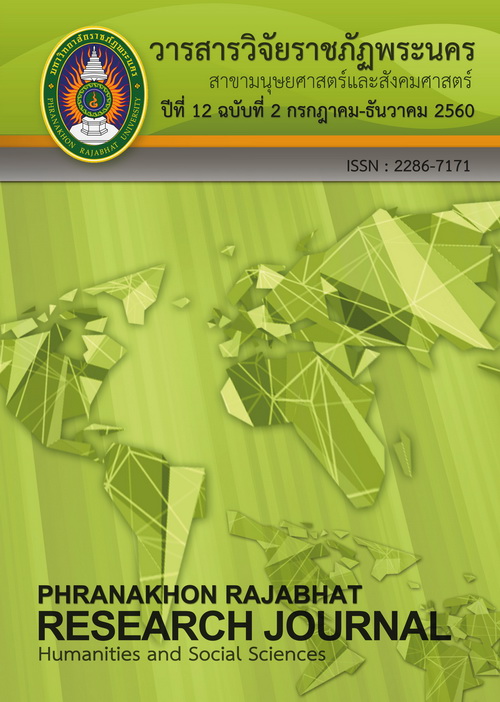มิชชันนารีกับความขัดแย้งในอินเดียยุคอาณานิคม
Main Article Content
Abstract
Relation between British Empire and missionary in India not absolutely support all together. We can see suspicion in this relation. For British Empire, business benefit makes them be neutral and sometime supporting mission of local religion for instance Hindu activity. Although British government in India limits missionary mission but they can’t unavoidable conflict and violence such as conflict and violence between Hindu Indian and missionary in Madras. This article emphasizes to present 2 conflicts evidence. First revealing conflicts between British Empire and missionary. Second revealing conflicts between Indian and missionary and Indian Christianity. This article uses historical approach for studying and presenting.
Article Details
Each publish articles were copyright by Phranakorn Rajabhat University
Any contents which appeared in each articles in the journal were authors personal opinion. It did not relate to Phranakorn Rajabhat University and other instructors in the university. Each authors would take responsibility on their articles. If there are any mistake, the authors will take responsibility themselves
References
Anderson, Courtney. (1956). To the Golden Shore: the Life of Adoniram Judson. Boston: Little, Brown.
Frykenberg, Robert E. (2008). Christianity in India: from Beginnings to the Present. Oxford: Oxford University Press.
Frykenberg, Robert E. “Christian Missions and the Raj.” In Norman Etherington, (ed). (2008). Missions and Empire. Oxford: Oxford University Press.
Gardner, Brian. (1971). The East India Company: a History. London: Rupert Hart-Davis.
Grimes, John. Mittal, Sushil. and Thursby, Gene. “Hindu Dharma.” In Sushil Mittal and Gene Thursby. (ed). (2006). Religions of South Asia: an Introduction. London: Routledge.
Hervey, George W. (1886). The Story of Baptist Missions in Foreign Lands: From the Time of Carey to the Present Date. St. Louis: Chancy R. Barnes.
Hobsbawm, E. J. (1987). The Age of Empire, 1875-1914. New York: Vintage.
Hobsbawm, E.J. (1996). The Age of Capital, 1848-1875. New York: Vintage.
Hobson, J. A. (1965). Imperialism: a study. Ann Arbor: University of Michigan Press.
Hyam, Ronald. (2010). Understanding the British Empire. Cambridge: Cambridge University Press.
Mukherjee, Ramkrishna. (1955). The Rise and Fall of the East India Company; a Sociological Appraisal. New York: Monthly Review Press.
Philips, C. H. (1961). The East India Company, 1784-1834. Manchester: Manchester University Press.
Srivastava, Ramesh Chandra. (1971). Development of Judicial System in India under the East India Company, 1833-1858. Bombay: N.M. Tripathi Private.
Thistlethwayte, Lynette E. L. “The Role of Science in the Hindu-Christian Encounter.” In Geoffrey A. Oddie. (ed). (1998). Religious Traditions in South Asia: Interaction and Change. Richmond: Curzon.
Webster, Anthony. (2009). The Twilight of the East India Company: the Evolution of Anglo-Asian Commerce and Politics, 1790- 1860. Suffolk, U.K.: Boydell Press.
Wild, Antony. (1999). The East India Company: Trade and Conquest from 1600. New York: Lyons Press.


